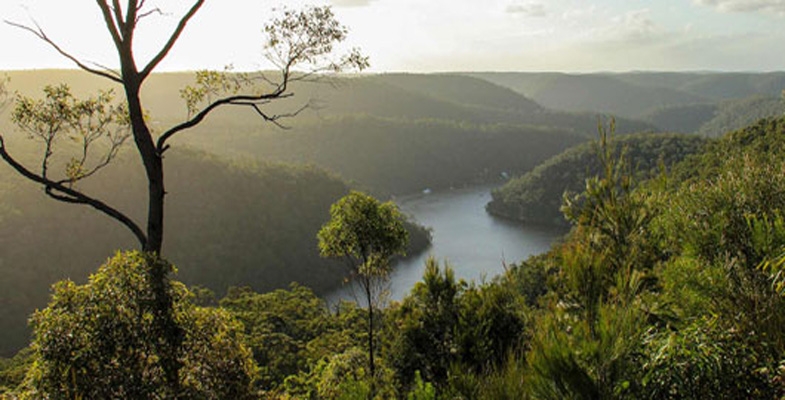The draft Berowra Valley National Park and Berowra Valley Regional Park Plan of Management was exhibited for public comment way back in March 2015 and STEP spent a busy few months liaising, assembling data and writing our submission before close of submissions in July 2015. The final Plan of Management was adopted by the Minister for Environment and Heritage on 2 February 2023, an interval of eight years.
Our comments in 2015 focused on our two main concerns, the proposed sporting fields on the two open grassed areas of approximately 2 hectares in size to the east of Schofield Trail, Stringybark Ridge, Pennant Hills and the potential mountain bike options for the park.
Future of Stringybark Ridge
In the adopted Plan of Management, the provision of sporting facilities at Stringybark Ridge has not progressed, but it has been identified as a potential site for recreational, educational or cultural activities.
Other potential options for the site include camping areas to support use of the Great North Walk and/or an area for community group activities.
The management response is to prepare a precinct plan for Stringybark Ridge to examine opportunities for future use and vegetation restoration. Vehicle and public access arrangements for Stringybark Ridge will be determined as part of the precinct plan.
STEP will be keeping an eye out for the precinct plan as our objection to sporting facilities was not about the sports per se but about the possible ecological impact of development.
Undeveloped ridgetops are particularly rare and valuable in the valleys of the Lane Cove River and Berowra Creek, and we consider that the simple fact that it is a ridge makes Stringybark Ridge of conservation significance.
In 2015 STEP argued that the construction of sporting fields and mountain bike tracks would destroy the value of Stringybark Ridge as habitat and as a corridor. Stringybark Ridge is an integral part of the corridor from the Parramatta River to the Hawkesbury River as it the closest point to Lane Cove National Park. Nomadic and migratory fauna, as well as dispersing young, all need safe corridors for survival of the species.
Environmental impacts
We were concerned about the environmental impacts around the proposed sporting fields, issues that will be similar for any development:
- noise from traffic and sports will disrupt wildlife
- lights that will disrupt wildlife including the threatened Powerful Owl
- traffic causing road kill with significant risk for nocturnal animals, particularly the vulnerable Powerful Owl
- clearing for construction of the sporting fields, roads, parking and facilities will remove native plants and increase the possibility of weeds
- if the sports fields are grassed, impacts such as water runoff carrying nutrients will kill native plants and increase weed invasion into the bushland
- if the sports fields are covered in synthetic grass, then there will be no habitat for ground mammals such as bandicoots, wallabies, native bees and ground feeding birds such as magpies – it will be a desert in the centre of the national park
- fire management will be targeted at protection of life and property rather than protection of the biodiversity values
Social impacts
We were also concerned about the social impacts of the sporting fields:
- noise – this carries for long distances in bushland areas, e.g. the rifle range at Hornsby can be heard from Stringybark Ridge
- lights will be very visible from parts of Westleigh, Thornleigh, Pennant Hills and Cherrybrook – this is against the stated priority of protection of the high scenic quality of the ridgelines found within the planning area, particularly along the Great North Walk and from other vantage points within Berowra Valley National Park
- at present walkers can safely enter the planning area at the park gate – if the sporting fields go ahead, entry will be along a noisy and dangerous road
- a reduction in bushland quality caused by many factors, e.g. weeds and native vegetation being managed for asset protection rather than for biodiversity conservation
Mountain bike options
Mountain bikes were a concern in 2015 but Garigal National Park was chosen as the preferred option for mountain bike facilities. In 2015 the draft Plan of Management stated in Management Response 3.6.8:
Permit cycling on designated management trails and public roads and investigate future opportunities for mountain bike access in the region.
In the 2023 adopted plan, 3.6.8 has been altered to:
Investigate and enable, where appropriate, future opportunities for mountain bike access as part of ongoing discussions with stakeholders and other land managers regarding cross-tenure options across the northern Sydney region. Any new construction will be with a focus on linking cross-tenure mountain biking opportunities.
Cycling is permitted along designated management trails and public roads. Cycling is not permitted on walking tracks. The construction of unauthorised mountain bike tracks remains illegal.
According to management purposes and principles:
The primary purpose of national parks is to conserve nature and cultural heritage. Opportunities are provided for appropriate visitor use in a manner that does not damage conservation values.
Getting the balance between visitor use and conservation correct is always controversial.
Quality of the document
STEP has many criticisms of the quality of the documentation in the plan. The whole geology section needs to be re-written with a correct balance between geology, landscape and soil. The naming and detail of species is inconsistent. Fish and mangroves are completely overlooked despite them being such important ecosystems.

